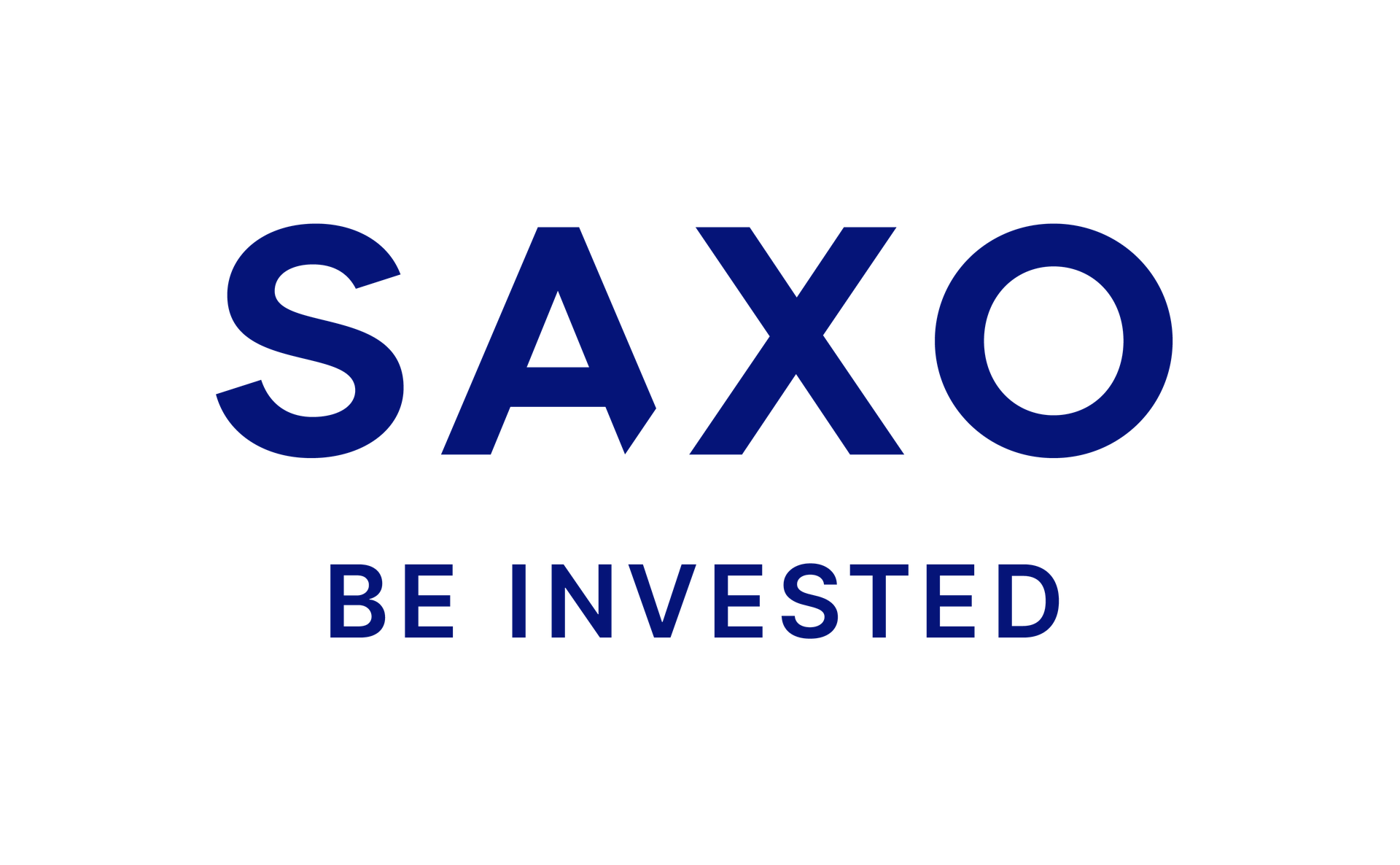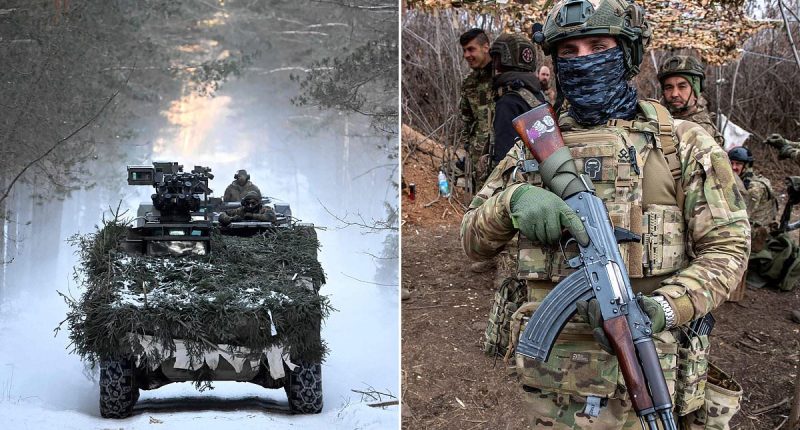Share this @internewscast.com
For more than three years, Ukraine has been fighting for survival against Russian aggression – and the war continues to rumble on.
Earlier in the month, Russian President Vladimir Putin called up 160,000 men for military service, after pledging to increase Russia’s military to 2.39million, including 1.5million active servicemen.
The only way Ukraine has been able to keep taking the fight to Russia is because of billions of dollars’ worth of military aid from the West flowing into Ukrainian coffers.
Now with Trump’s decision to pause aid to Ukraine, and challenge the status quo of the defence of the West, the European defence sector is booming.
But just how much can these firms keep growing, and should you buy in?

Rumbling on: The war in Ukraine has now entered its fourth year, as ceasefire talks have yet to pay off
The Trump effect
Trump’s impact on the European defence landscape has been two-fold.
On one level, the new US President has withdrawn aid as part of a bid to force Ukrainian President Volodymyr Zelensky to the negotiating table.
Matt Dorset, equity research analyst at Quilter Cheviot, told This is Money: ‘This has been a long-term trend with the US increasingly wanting to focus on China and less on Russia, and leave Russia more to the Europeans.’
‘This is a very significant structural change that isn’t likely to reverse, some probably assume this is quite a short-term phenomena, and we’ll go back to normal after Trump, but there is no guarantee.’
Beyond this though, Trump’s other message is clear: too long has Nato been reliant on US military spending, and Europe simply hasn’t been pulling its weight.
In many ways, this has had a positive impact on European attitudes towards defence and military spending, casting into harsh light the fragility of the situation European governments find themselves in.
And attitudes are shifting as a result.
A new era of European defence
Back in 2014, just three of the 32 Nato member states were meeting Nato’s guidelines of 2 per cent defence spending.
But without the US as a guardian angel, European nations are beginning to realise that their security could now be solely in their own hands.
Dorset said: ‘If you plot a graph of distance from your capital to Moscow and level of defence spending, it’s a very strong correlation, stronger than the fiscal position of your country and defence spending.
‘Spain and Italy don’t feel that threat from Russia to anywhere near the same degree… but I think there probably will be announcements even from those countries’
Aneeka Gupta, director of macroeconomic research at WisdomTree, told This is Money: ‘If you fast forward to 2024, we now have 23 out of out of the 32 members meeting Nato’s 2 per cent guidelines and the goal posts are shifting.’
‘With the rising likelihood of Nato’s 2 per cent guideline now having to increase, European Union member states will now have to rise up to that increased guideline.’
This is just the beginning.
In June, Nato member states will meet for the 2025 Nato summit in The Hague, a meeting where an increase to government defence spending targets is likely to be top of the agenda.
Back in January, Nato Secretary General Mark Rutte said: ‘Two per cent is not nearly enough. To stay safe in the years to come, allies will need to spend considerably more than two per cent.’
Quilter Cheviot’s Dorset said: ‘I think it will probably be at least 3 per cent. I think it could be 3.5 per cent, maybe even four.’
Keir Starmer has committed to upping defence spending to 2.5 per cent of GDP from April 2027, bringing the increase forward from the 2030 pledge under the previous government.
Starmer said the ambition is to increase spending to 3 per cent under the next government.
Meanwhile, Poland, Estonia and Latvia are all spending more than 3 per cent of GDP on defence, with Latvia planning to raise spending to 4 per cent, Poland 4.7 per cent and Estonia five per cent over the next year.
Lithuania, which currently spends 3 per cent on defence, said it would increase this to between 5 and 6 per cent of GDP from 2026.
‘Europe increasingly won’t want to rely on the US, which they have done for a long time. European militaries have been massively depleted over the last few decades,’ Dorset added.
‘They need to look after their security off their own backs.’

Preparation: Baltic nations, where Nato has an ‘enhanced forward presence’, have committed to up defence spending over the next year
What this means for defence firms
With heightened spending across the continent, European defence firms are on the up. Already, with the war in Ukraine in its fourth year, defence stocks have risen considerably.
Over the three years to March 2025, Europe’s leading defence stocks BAE Systems, Rolls-Royce, Rheinmetall, Thales, Dassault Aviation, Safran and Leonardo have gained 245 per cent, figures from Etoro show, compared to an increase of just 66 per cent for the US magnificent seven stocks and 39 per cent for the S&P 500.
The seven sector leaders have risen 65 per cent over the past year.
Lale Akoner, global market analyst at Etoro, said: ‘Over the past five years, investors have grown used to US big tech being top of the class, but all this could change.’
Recent geopolitical shifts, however, could mean that this trend continues.
‘We’ve seen a new policy framework being placed by the European Defence Industrial Strategy which is trying to channel and encourage and incentivize more investment to be directed towards procurement of arms and ammunitions from the EU,’ Gupta said.
She added: ‘The European Defence Industrial Strategy has actually put out tangible objectives to be reached by 2030, stating that 50 per cent of procurement of EU arms and arms and ammunition must take place from the EU.’
The defence sector operates on very long-term contracts. That means that the earnings expansion ideally takes time to materialise
Aneeka Gupta, WisdomTree
This can only be good news for European firms.
Akoner added: ‘Along with persistent geopolitical tensions, these conditions have created a perfect storm for Europe’s defence sector, as the region will now be more reliant on its own contractors. Investors should keep an eye on whether these plans and pledges materialise into concrete funding and expenditure in the coming months.’
Where some concerns remain, is that the defence sector might have passed its peak.
Dan Coatsworth, investment analyst at AJ Bell, said: ‘Both Europe as a region and the defence sector are “hot” today but were very much “cold” five years ago.
‘There is only a small pool of relevant companies and cracks are already emerging, with British defence group Qinetiq warning of delays to contracts in the UK and US and disappointing higher margin product sales.
‘Governments might have signposted bigger defence spending longer term but short-term the administrations in the UK and US are looking hard at ways to save money, meaning new contracts including defence activities might not be forthcoming for a while. It raises the risks of more profit warnings in the defence space.’
‘You could definitely make the case that defence stocks look expensive,’ Dorset says, noting: ‘valuations in the sector are much more stretched than the historic levels.’
‘You can make the argument, and I think that’s fair. If you couldn’t make the argument, then it would be strange that the market is not valuing them more appropriately.’
However, he added: ‘I think there will be a short-term dislocation between valuation and actual earnings coming through.
‘The share price appreciation that we’ve had has been driven principally by multiple expansion in terms of valuations going up as opposed to earnings going up, because these companies are capacity constrained in terms of what they can actually produce and sell near-term.’
German firm Rheinmetall, for example, signed a €3.1billion contract in February to deliver up to 368 platoon systems up to 2030.
Likewise, UK-based BAE systems, which has a £77.8billion order book, reported record orders of £33.7billion in 2024.
The market, Dorset said, has been ‘more multiple driven because investors are trying to move to where the puck is going as opposed to where it is right now… in the long term there’s still value because for the next five or ten years you have this structural tailwind, which will be incredibly persistent and significant.’
Gupta agrees. She said: ‘The defence sector operates on very long-term contracts. That means that the earnings expansion ideally takes time to materialise, so as those order backlogs convert into revenue and we see profitability scale up over the next few years.
‘What’s not in the price is the realisation of the expansion of the earnings per share growth, which will be the denominator of your price to earnings ratio. As those values get realised, we will automatically see the PE ratio become more attractive.’

Demand: Saab’s NLAW shoulder launched missile system has become indispensable for Ukrainian troops
Where should investors be looking?
Across the board, the largest European defence companies have been on a sustained upwards trajectory, bar some impact seen as a result of Donald Trump’s recent tariff announcements.
Notably, the firms that have fallen the most in recent weeks are Airbus and Melrose Industries, both of which have lower defence allocations. Defence makes up around a third of Melrose’s business, and 21 per cent of Airbus’.
For stock pickers, Dorset highlights Saab as a firm that could benefit from the aforementioned structural tailwinds.
He said: ‘Saab, in particular, has quite an attractive and diverse product portfolio… the EU published a white paper on European defence readiness, and identify some key capability gaps in Europe at the moment, which I think is well aligned to the products that Saab produces.
‘In particular, surveillance equipment and man portable munitions which Saab is very strong in.’
He added: ‘At the same time, the home market of Sweden, which is 41 per cent of sales, has announced very ambitious spending targets of 3.5 per cent of GDP by 2030, and there is broad cross-party support for increased spending.

‘The path to increased spending there is very much de-risked compared to other countries, and Sweden joined Nato last year, which opens up the door to more export opportunities because suddenly Sweden has a bit more political clout.
Meanwhile, those looking to gain more diversified exposure to the European defence industry can consider recently developed European defence ETFs.
Capitalising on the growing popularity of defence stocks, WisdomTree launched its Europe Defence Ucits ETF, the first of its kind, in March.
Wisdom Tree’s ETF’s main holdings are Rheinmetall and Leonardo, followed by BAE Systems and Saab.
Since the launch, WisdomTree’s offering has been followed by HANetf’s Future of European Defence UCITS ETF.
Gupta said: ‘The aim of the ETF is to capitalise on Europe’s strategic shift towards increased defence spending.
‘Eligible companies need to be involved in the defence sector. They need to derive at least 10 per cent of their revenue from such business activities within the defence industry… and each selected company is classified based on their exposure.’
Gupta adds: ‘The index is weighted by free float market capitalization, but we adjust that by the exposure score. Hence companies that have higher exposure score get a higher weighting in the underlying index.’
WisdomTree says this differentiates its product from competitors.
However, Coatsworth warns: ‘The launch of new thematic funds should be treated with caution. They tend to be launched when an investment theme is deemed to be hot and everyone is talking about it. In reality, they often come at the top of a market.
DIY INVESTING PLATFORMS
AJ Bell

AJ Bell
Easy investing and ready-made portfolios
Hargreaves Lansdown

Hargreaves Lansdown
Free fund dealing and investment ideas
interactive investor

interactive investor
Flat-fee investing from £4.99 per month
Saxo

Saxo
Get £200 back in trading fees
Trading 212
Trading 212
Free dealing and no account fee
Affiliate links: If you take out a product This is Money may earn a commission. These deals are chosen by our editorial team, as we think they are worth highlighting. This does not affect our editorial independence.
Compare the best investing account for you





